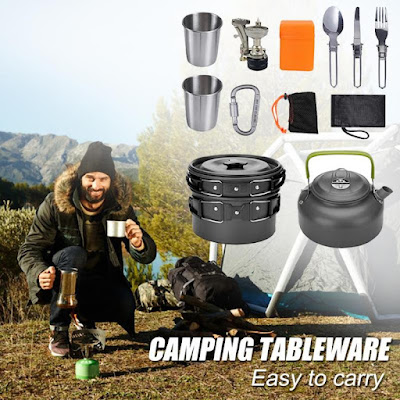Hiking A Beginner's Guide to Hitting the Trails
Hiking is a great way to explore the outdoors get some exercise and connect with nature. Whether you're a seasoned hiker or a beginner there are a few things you should know before hitting the trails. In this beginner's guide to hiking we'll cover everything you need to know to get started.
What is the importance of hiking?
Hiking is a popular outdoor activity that provides many benefits for both physical and mental health. Here are some of the key reasons why hiking is important:
Physical exercise: Hiking is a great form of exercise that can help you improve your cardiovascular health build strength and endurance and burn calories. It's also a low-impact activity that is easy on the joints and can be done by people of all ages and fitness levels.
Mental health: Spending time in nature and getting regular exercise through hiking can have a positive impact on mental health. It can help reduce stress and anxiety improve mood and boost overall mental well-being.
Hiking A Beginner's Guide to Hitting the Trails
Choose the right trail
Before you head out on a hike it's important to choose the right trail for your experience level. Look for trails that are marked with a difficulty rating that matches your skill level. If you're a beginner start with shorter and easier trails and gradually work your way up to more challenging hikes.
Wear the right gear
Wearing the right gear can make all the difference when it comes to comfort and safety on the trail. Invest in a good pair of hiking shoes or boots that provide support and traction on uneven terrain. Dress in layers so you can adjust your clothing as needed based on the weather and your level of exertion.
Pack the essentials
Even if you're only going on a short hike it's important to pack a few essentials in case of an emergency. Bring plenty of water snacks a map or GPS device and a first aid kit. It's also a good idea to bring sunscreen insect repellent and a hat to protect yourself from the sun.
Know basic safety tips
Hiking can be a safe and enjoyable activity as long as you take a few basic safety precautions. Stay on marked trails and don't wander off into unmarked areas. Check the weather forecast before heading out and avoid hiking during extreme weather conditions. Let someone know where you're going and when you plan to return.
Respect nature
When hiking it's important to respect the natural environment and leave no trace. Stay on designated trails pack out all of your trash and avoid disturbing wildlife or vegetation. Follow the principles of Leave No Trace to minimize your impact on the environment.
By following these tips you can have a safe and enjoyable hiking experience no matter your experience level.
Top Hiking Destinations in the Pacific Northwest
If you're looking for some of the best hiking destinations in the Pacific Northwest you're in luck. This region of the United States is home to some of the most stunning and diverse hiking trails in the country. Here are a few of the top hiking destinations in the Pacific Northwest to add to your bucket list
1- Mount Rainier National Park: This park in Washington state is home to over 260 miles of hiking trails ranging from easy nature walks to challenging alpine climbs. Don't miss the opportunity to hike to the summit of Mount Rainier itself the highest peak in the park.
2- Olympic National Park: This park on Washington's Olympic Peninsula is home to a variety of ecosystems including rainforests beaches and alpine meadows. Hike the Hoh Rain Forest Trail to experience the lush greenery and moss-covered trees that make this park so unique.
3- Mount Hood National Forest: Located in Oregon Mount Hood National Forest is a paradise for hikers. Hike the Timberline Trail which circles around the base of Mount Hood and offers stunning views of the mountain and the surrounding wilderness.
4- Columbia River Gorge National Scenic Area: This area on the border of Oregon and Washington is home to dozens of hiking trails that offer breathtaking views of the Columbia River and its surrounding canyons
What to wear hiking
When it comes to hiking what you wear can make a big difference in your comfort and safety on the trail. Here are some tips on what to wear hiking
1- Footwear: Invest in a good pair of hiking shoes or boots that provide support and traction on uneven terrain. Choose footwear that fits well and is comfortable and break them in before hitting the trail to avoid blisters
2- Clothing: Dress in layers so you can adjust your clothing as needed based on the weather and your level of exertion. Avoid cotton clothing, as it retains moisture and can make you feel cold and damp. Opt for moisture-wicking fabrics that will keep you dry and comfortable.
3-Headwear: Wear a hat to protect yourself from the sun and keep sweat out of your eyes. Choose a hat with a brim that provides shade for your face and neck
4- Sunglasses: Wear sunglasses to protect your eyes from harmful UV rays and reduce glare
5- Socks: Wear socks that are comfortable and moisture-wicking. Avoid cotton socks as they can cause blisters. Look for socks made from wool or synthetic materials that will keep your feet dry and blister-free
6- Outerwear: Bring a rain jacket or windbreaker in case of inclement weather. Choose outerwear that is lightweight and packable so you can easily stow it in your backpack when not in use.
By wearing the right gear you can ensure that your hiking experience is comfortable and safe. Don't forget to also bring a backpack to carry all of your essentials such as water snacks a map or GPS device and a first aid kit.
Hiking foods and water
Here are some tips for choosing the right foods and water for your next hike
1- Water: Staying hydrated is crucial when hiking especially in hot and dry conditions. Always bring plenty of water with you and aim to drink at least half a liter to a liter of water per hour of hiking. If you're planning a long hike or camping overnight consider bringing a water filter or purification tablets to treat water from natural sources like streams or lakes.
2-Snacks: Hiking burns a lot of calories so it's important to bring plenty of high-energy snacks to keep you fueled throughout the day. Look for snacks that are easy to pack like trail mix energy bars and dried fruit. Nuts seeds and jerky are also good options.
3- Meals: If you're planning a longer hike or camping overnight you'll need to plan meals as well. Look for lightweight non-perishable foods that are easy to prepare on the trail like instant oatmeal pasta and rice. Canned goods and dehydrated meals are also good options but be sure to pack out all of your trash.
4- Electrolytes: When hiking you lose electrolytes through sweat which can lead to fatigue cramping and even dehydration. Consider bringing sports drinks or electrolyte tablets to help replenish these vital nutrients.
5- Alcohol: It's best to avoid alcohol when hiking as it can impair your judgment and lead to dehydration.
Remember to pack out all of your trash and avoid littering on the trail. By bringing the right foods and water you can ensure that your hiking experience is enjoyable safe and energizing.
What is trekking vs hiking?
Trekking and hiking are both forms of outdoor recreation that involve walking in natural environments but there are some differences between the two.
Hiking is a leisurely activity that involves walking on well-maintained trails and paths usually for a few hours or a day at most. It's typically done as a form of exercise or for enjoyment and requires little to no specialized equipment. Hiking trails can be found in a variety of locations from local parks to national parks and wilderness areas.
Trekking on the other hand is a more challenging and rigorous form of hiking that involves longer distances multiple days and often remote and rugged terrain. It usually requires specialized equipment such as a backpack tent sleeping bag and stove as well as more advanced skills and knowledge of wilderness travel. Treks can take you through a variety of environments from high-altitude mountain ranges to dense jungles and deserts.
Overall hiking and trekking are both great ways to experience the outdoors and get exercise but trekking requires more preparation skill and endurance than hiking.

.webp)






